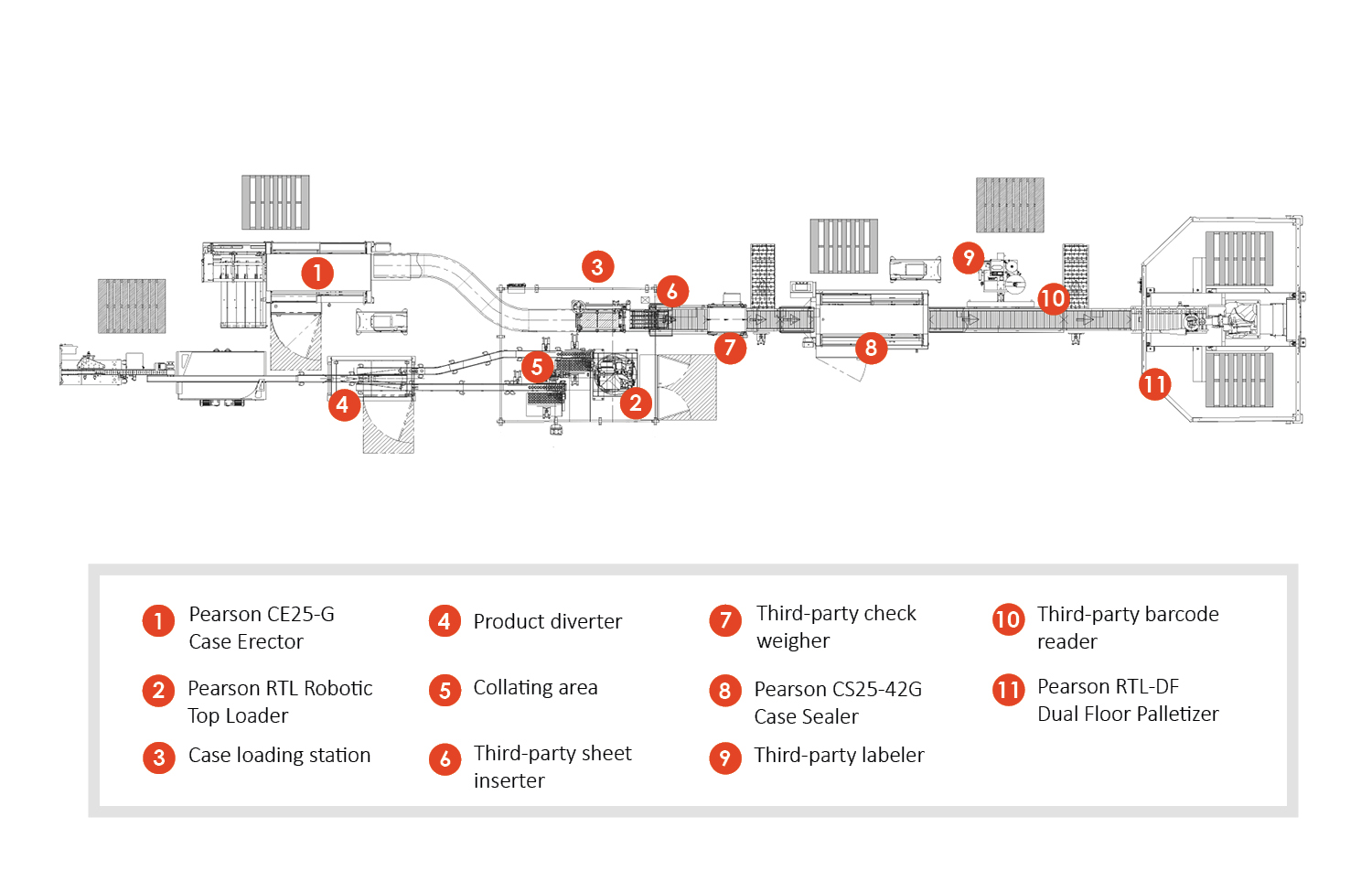Cases are formed and bottom sealed by a Pearson CE25-G case erector (1) and travel on a conveyor toward the Pearson RTL robotic top loader (2). Cases are side clamped when they arrive at the loading station (3) and flap spreaders actuate down to support smooth product placement into the case. Product flows into a lane diverter (4) that distributes the bottles into two lanes. When a full row of product has accumulated at the end of an infeed conveyor, a stop deploys and the row is pushed into the collating area (5) until a full layer is built. Then, the robot picks and places layered products into the empty cases until the cases are full.
Filled cases are singulated as they exit the packing cell and travel to the third-party sheet inserter (6) where they receive a leaflet as a vision system verifies proper application and positioning. The cases flow through a third-party check weigher (7) where cases that do not fall within range are rejected - otherwise traveling to the Pearson CS25-42G case sealer (8) where they are top sealed with hot melt glue. The sealed cases then travel to a third-party labeler (9) for label application, and a third-party bar code reader (10) verifies the label was properly applied before the cases enter the Pearson RTL-DF dual floor robotic palletizer (11). If a case does not have a label, it is rejected prior to entering the palletizer.
In the robotic palletizing cell, cases are picked and placed to form the selected pallet pattern, and complete pallet stacks are removed from one side of the cell as the robot continues to operate on the other side.



